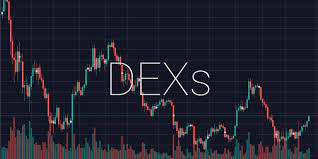Uniswap is one of the most influential decentralized finance (DeFi) Uniswap protocols, reshaping how users trade cryptocurrencies without the need for traditional intermediaries. Built on the Ethereum blockchain, Uniswap utilizes an automated market maker (AMM) model, allowing anyone to swap tokens, provide liquidity, and participate in decentralized trading. Its open-source nature and permissionless access have made it a cornerstone of the DeFi movement.
In this article, we’ll explore the core mechanisms of Uniswap, its impact on the crypto landscape, and its future potential.
How Uniswap Works
Unlike traditional exchanges, which rely on order books and centralized control, Uniswap uses an AMM system. This model eliminates the need for buyers and sellers to match orders directly. Instead, liquidity pools power the system, allowing for seamless and automated trading.
Key Components of Uniswap:
- Liquidity Pools: Users deposit token pairs into pools, enabling automated token swaps. These pools are governed by smart contracts.
- Liquidity Providers (LPs): Individuals who supply tokens to liquidity pools and earn a portion of trading fees.
- Constant Product Formula: Uniswap’s algorithm follows the equation x * y = k, ensuring balanced liquidity in the pool.
- Decentralized & Permissionless: Anyone can trade or add liquidity without approval.
By leveraging these mechanisms, Uniswap removes the need for centralized control, making crypto trading more accessible and efficient.
The Evolution of Uniswap: Versions 1 to 4
Uniswap has continuously evolved to enhance efficiency and reduce costs.
- Uniswap V1 (2018): The initial version introduced the AMM model and basic token swapping.
- Uniswap V2 (2020): Improved features, including direct ERC-20 to ERC-20 token swaps and better price oracles.
- Uniswap V3 (2021): Introduced concentrated liquidity, allowing LPs to allocate capital efficiently and enhance earnings.
- Uniswap V4 (Upcoming): Expected to optimize gas fees and introduce “hooks” for customizable liquidity pools.
Each upgrade has improved Uniswap’s functionality, making it a leader in decentralized trading.
Advantages of Uniswap
- Decentralization: No central authority controls trades, ensuring censorship resistance.
- Permissionless Trading: Anyone with an Ethereum wallet can use Uniswap without registration.
- Passive Income: LPs earn a share of trading fees, making it attractive for investors.
- Interoperability: Supports a wide range of ERC-20 tokens and integrates with other DeFi platforms.
- Non-Custodial: Users retain control of their assets, reducing counterparty risks.
Challenges & Risks
Despite its innovations, Uniswap faces some challenges:
- Impermanent Loss: LPs may lose value if token prices fluctuate significantly.
- High Gas Fees: Transactions can become expensive during network congestion.
- Regulatory Uncertainty: Decentralized exchanges face scrutiny from global regulators.
- Smart Contract Risks: Bugs and exploits in smart contracts could lead to losses.
These challenges highlight the need for continuous improvements and risk management strategies.
Uniswap’s Impact on DeFi
Uniswap has played a pivotal role in driving DeFi adoption. It has inspired numerous other protocols and facilitated billions in trading volume. Additionally, its governance model, powered by the UNI token, allows users to vote on protocol upgrades and community proposals.
With continued innovation, Uniswap remains at the forefront of DeFi, empowering users worldwide with open and transparent financial services.
Conclusion
Uniswap has revolutionized crypto trading by making it decentralized, efficient, and accessible. As the DeFi ecosystem grows, Uniswap’s ongoing development will shape the future of finance. Whether you’re a trader, investor, or liquidity provider, Uniswap offers a dynamic and evolving platform to engage with decentralized finance.
Would you like to explore how to use Uniswap effectively or learn about potential investment strategies? 🚀


